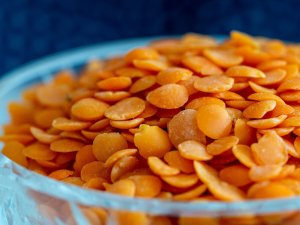What is a suitable substitute for Red Lentils?
If you’re looking for a suitable substitute for red lentils, there are a few options available. You could try using brown lentils, green lentils, yellow lentils, split peas, chickpeas, cauliflower, or peanuts.
Remember that each substitute will bring its own flavor and texture to the dish. Adjust cooking times and methods accordingly to accommodate the specific lentil substitute you choose.
What are Red Lentils?
Red lentils are a type of lentil legume that are widely used in cooking, particularly in Indian, Middle Eastern, and Mediterranean cuisines. They are a variety of lentils that have been husked and split, resulting in a smaller and quicker-cooking lentil compared to other types.
Red lentils are known for their vibrant red-orange color, which fades to a yellow hue when cooked. They have a mild, slightly sweet flavor and a soft texture when cooked, making them ideal for soups, stews, curries, and dals. Due to their relatively quick cooking time, they are often preferred for recipes that require faster preparation.
These lentils are a good source of plant-based protein, dietary fiber, and various essential nutrients such as iron, folate, and magnesium. They are also low in fat and cholesterol, making them a nutritious addition to a balanced diet.
Red lentils are versatile and can be used in a variety of dishes, both as a main ingredient or as a complement to other ingredients. They easily absorb flavors and contribute to the overall richness and thickness of sauces and soups.
Okay, before we look at your red lentils substitute options, let’s deal with that empty cupboard situation!
Where can I buy Red Lentils?
If you want to be more prepared and ensure you don’t run out of red lentils then you should stock up now.
Nowadays most delicatessens and general supermarkets stock a wide variety of red lentils.
Or if you prefer you can also purchase red lentils on-line. Here is a link for a large 4 lb pack of red lentils.
So why not jump on and place your order today.
STOCK UP NOW!
Red Lentils by Clear Creek – large 4 lb resealable bag
Idaho red lentils full of protein and fiber. Suitable for Kosher and Vegan diets. Also Non-GMO and not irridiated.
Note: Some lentils may sprout but this does not affect their quality and you can still cook them.
What can I substitute for Red Lentils?
Here are some of the best ingredients to substitute the flavor and role that red lentils provides in your recipes.
- Brown lentils
- Green lentils
- Yellow lentils
- Split peas
- Chickpeas
- Cauliflower
- Peanuts
Red Lentil substitutes
Brown lentils
You can substitute brown lentils for red lentils in most recipes. However, there are a few things to keep in mind when making this substitution.
- Brown lentils will not become as soft or creamy as red lentils when cooked. This is because brown lentils have a thicker skin that does not break down as easily. As a result, your dish may have a slightly more chewy texture if you use brown lentils instead of red lentils.
- Brown lentils will take longer to cook than red lentils. This is because the thicker skin of brown lentils takes longer to soften. You will need to cook brown lentils for about 20-30 minutes, while red lentils can be cooked in as little as 15 minutes.
Overall, brown lentils can be a good substitute for red lentils in most recipes. However, if you are looking for a dish with a very soft or creamy texture, you may want to choose a different type of lentil.
Here are some other things to consider when substituting brown lentils for red lentils:
- The flavor of brown lentils is slightly more earthy than red lentils. If you are sensitive to strong flavors, you may want to use a smaller amount of brown lentils in your dish.
- Brown lentils have a higher fiber content than red lentils. This means that they can be a good choice if you are looking for a high-fiber meal.
Ultimately, the best way to decide whether to substitute brown lentils for red lentils is to experiment and see what you prefer.
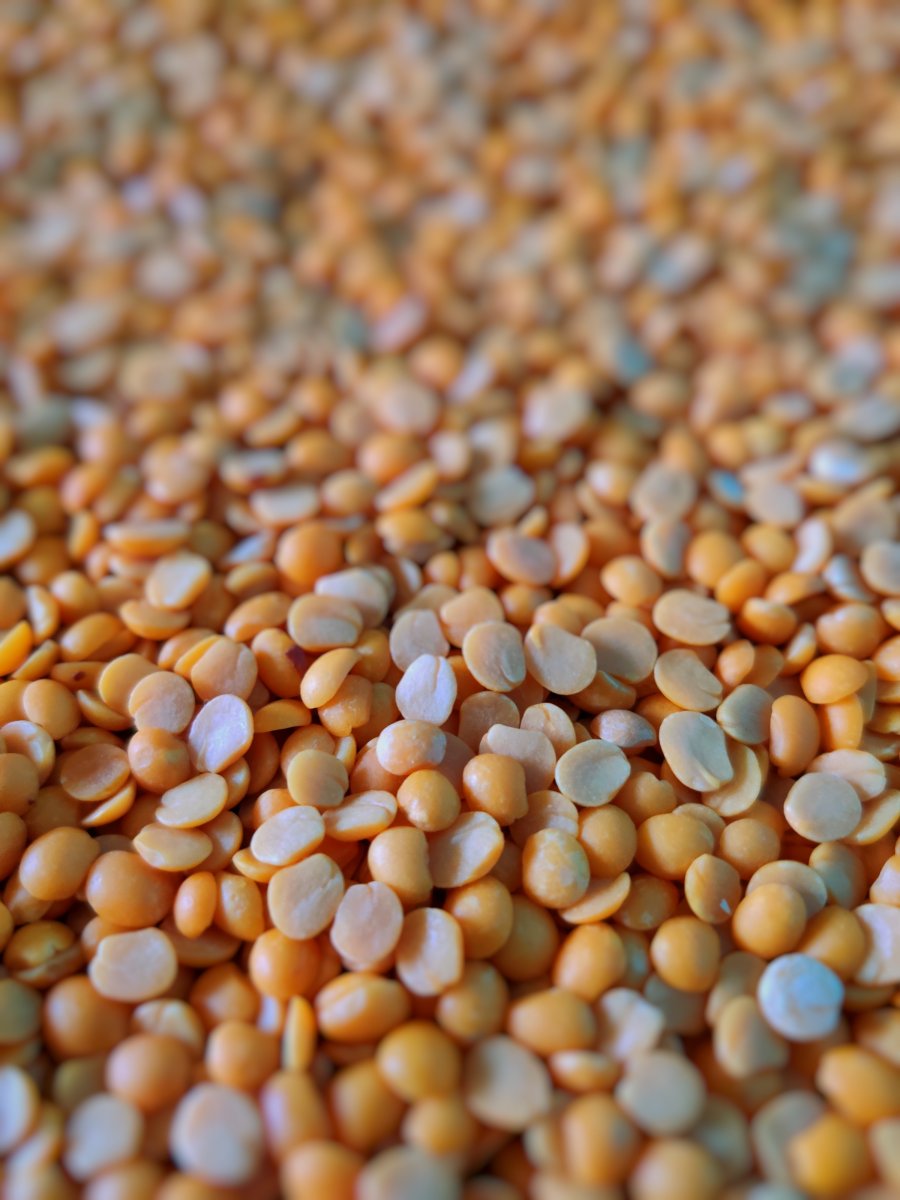
Green lentils
Green lentils are the seeds of the lentil plant. They have a slightly firmer texture than split peas, and they have a more earthy flavor. Green lentils are typically cooked in salads, curries, and stir-fries.
You can substitute green lentils for red lentils in most recipes. However, there are a few things to keep in mind when making this substitution.
- Green lentils will not become as soft or mushy as red lentils when cooked. This is because green lentils have a harder skin that does not break down as easily. As a result, your dish may have a slightly more chewy texture if you use green lentils instead of red lentils.
- Green lentils will take longer to cook than red lentils. This is because the harder skin of green lentils takes longer to soften. You will need to cook green lentils for about 25-30 minutes, while red lentils can be cooked in as little as 15 minutes.
Overall, green lentils can be a good substitute for red lentils in most recipes. However, if you are looking for a dish with a very soft or creamy texture, you may want to choose a different type of lentil.
Here are some other things to consider when substituting green lentils for red lentils:
- The flavor of green lentils is slightly more earthy and peppery than red lentils. If you are sensitive to strong flavors, you may want to use a smaller amount of green lentils in your dish.
- Green lentils have a higher protein content than red lentils. This means that they can be a good choice if you are looking for a high-protein meal.
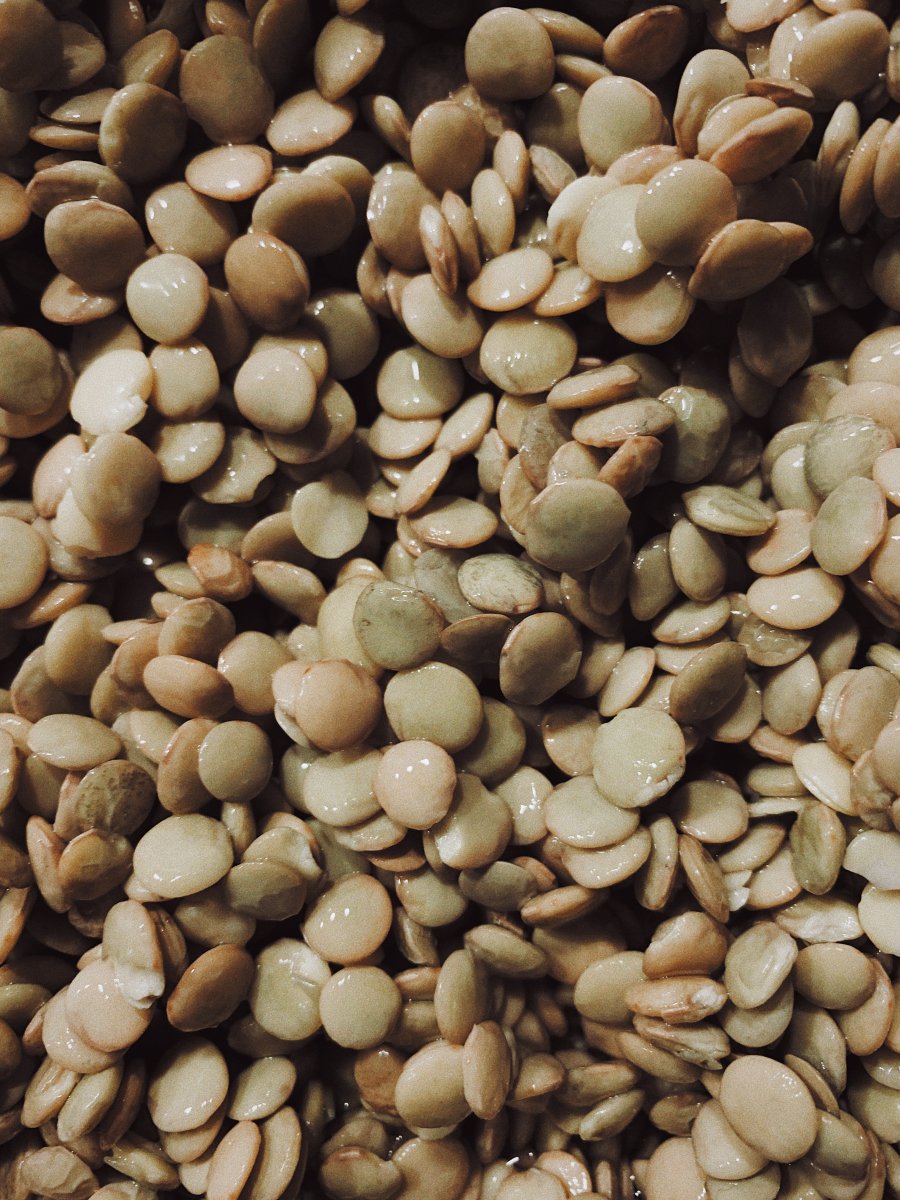
Yellow lentils
Yes, yellow lentils can be a good substitute for red lentils in most recipes. They have a similar flavor and texture, and they cook in about the same amount of time.
Here are some of the similarities and differences between yellow and red lentils:
Similarities:
- Flavor: Yellow lentils have a mild, earthy flavor that is similar to red lentils.
- Texture: When cooked, yellow lentils have a soft but slightly chewy texture that is similar to red lentils.
- Cooking time: Yellow lentils cook in about 20-30 minutes, which is similar to the cooking time for red lentils.
Differences:
- Color: Yellow lentils are a yellow-brown color, while red lentils are a bright red color.
- Nutritional content: Yellow lentils have a slightly higher protein content than red lentils.
Overall, yellow lentils are a good substitute for red lentils in most recipes. If you are looking for a lentil with a slightly different flavor or color, yellow lentils are a good option.
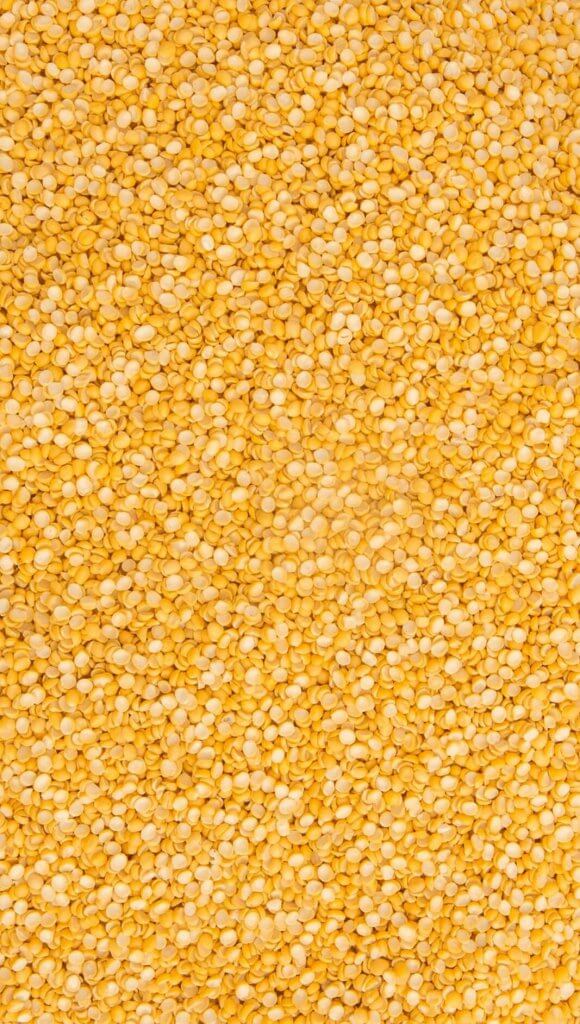
Split peas
Split peas are dried field peas that have been split in half. They are a good source of protein and fiber, and they have a mild flavor. Split peas are typically cooked in soups, stews, and dals.
Split peas can be a good substitute for red lentils in most recipes. They have a similar flavor and texture, and they cook in about the same amount of time.
Here are some of the similarities and differences between split peas and red lentils:
Similarities:
- Flavor: Split peas have a mild, earthy flavor that is similar to red lentils.
- Texture: When cooked, split peas have a soft but slightly chewy texture that is similar to red lentils.
- Cooking time: Split peas cook in about 20-30 minutes, which is similar to the cooking time for red lentils.
Differences:
- Color: Split peas are a different color to red lentils which are a bright red color.
- Nutritional content: Split peas have a slightly higher protein content than red lentils.
- Shape: Split peas are split in half, while red lentils are whole.
Overall, split peas are a good substitute for red lentils in most recipes. If you are looking for a lentil with a slightly different flavor or color, split peas are a good option.
However, it’s important to note that split peas will not break down as much as red lentils when cooked, so your dish may have a slightly more grainy texture if you use split peas instead of red lentils.
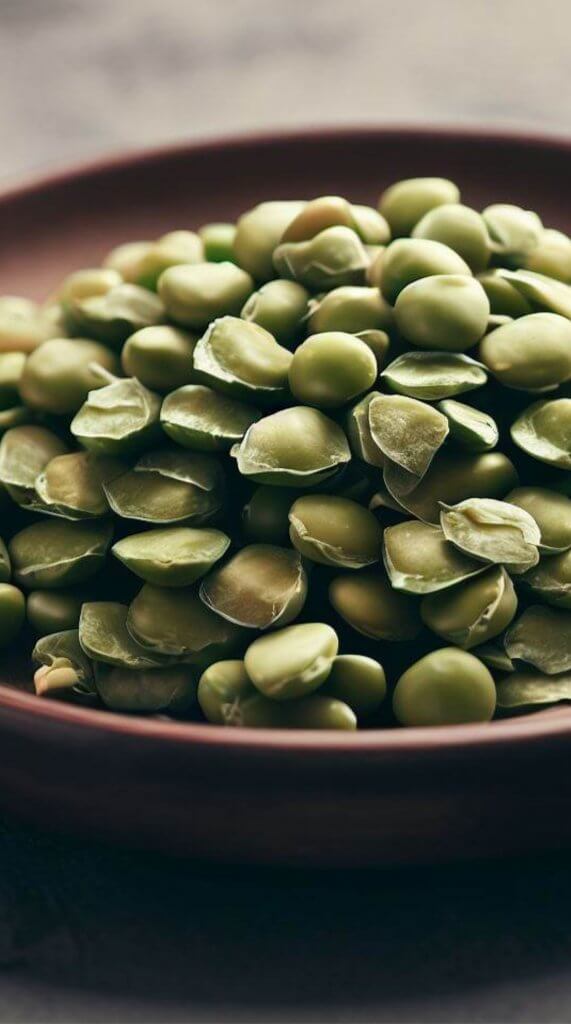
Chickpeas
Chickpeas can be used as a substitute for red lentils in certain recipes, but there are some differences to consider. Here are a few things to keep in mind when substituting chickpeas for red lentils:
- Texture: Red lentils have a softer texture and tend to break down more easily when cooked. Chickpeas, on the other hand, have a firmer texture and hold their shape better. If you’re using chickpeas as a substitute, the final dish may have a slightly different texture.
- Cooking time: Red lentils typically cook much faster than chickpeas. If you’re using chickpeas instead of red lentils in a recipe, you may need to adjust the cooking time accordingly. Chickpeas usually require a longer cooking time to become tender.
- Flavor: Chickpeas have a slightly nutty flavor, while red lentils have a milder taste. The substitution may affect the overall flavor profile of the dish, so you may need to adjust the seasonings or spices accordingly.
- Recipes: Chickpeas are versatile and can be used in various recipes like soups, stews, curries, and salads. However, it’s important to note that not all recipes that call for red lentils will work well with chickpeas as a substitute. For example, dishes like lentil soup or dal heavily rely on the texture and flavor of red lentils, and chickpeas may not provide the same results.
In summary, while chickpeas can be used as a substitute for red lentils in certain recipes, it’s important to consider the differences in texture, cooking time, and flavor.
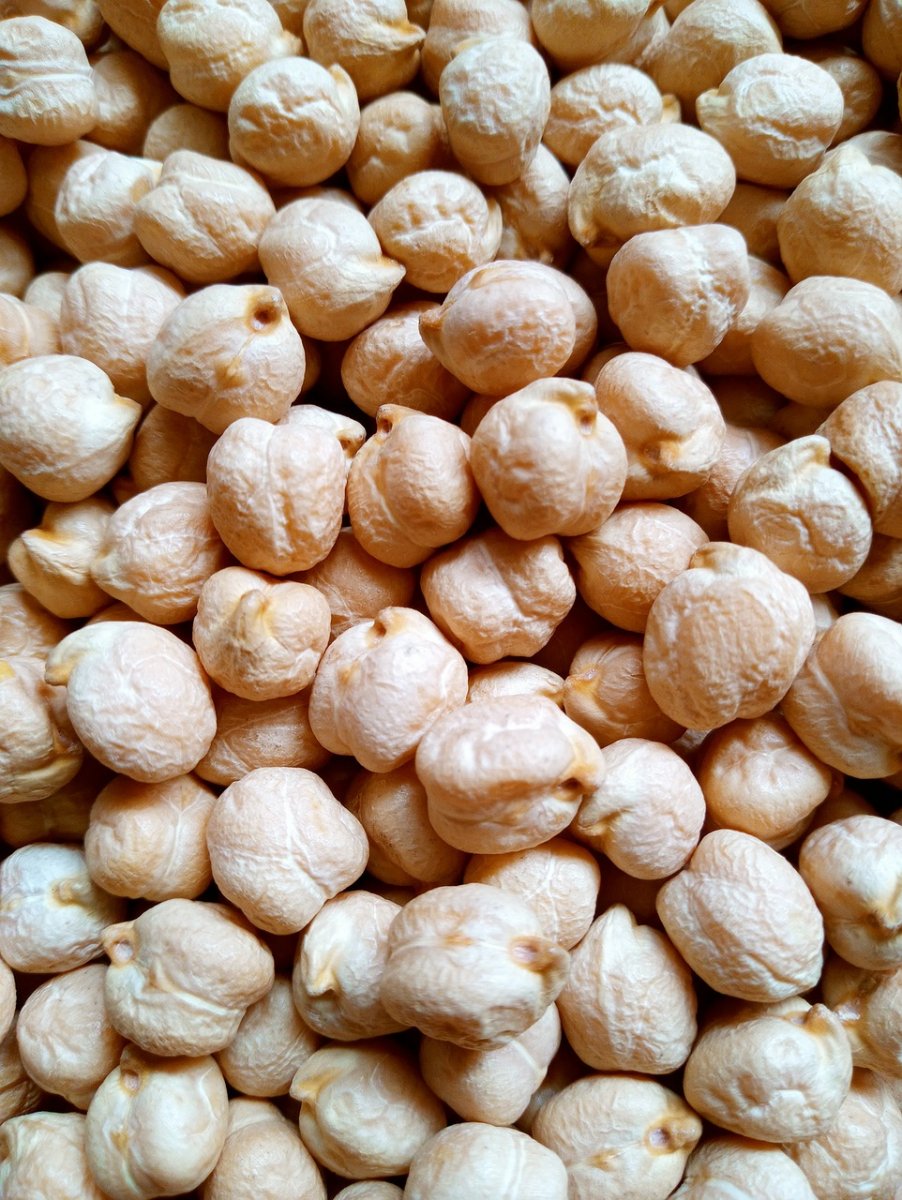
Cauliflower
Cauliflower can be a good substitute for red lentils in some recipes. It has a similar texture and can be cooked in a similar way. However, there are some important differences to keep in mind.
- Flavor: Cauliflower has a mild flavor that is slightly different from red lentils. This may be a welcome change in some dishes, but it could be a problem if you are looking for a more neutral flavor.
- Texture: Cauliflower has a slightly different texture than red lentils. It is not as soft or creamy, but it can be mashed or pureed to achieve a similar consistency.
- Nutritional content: Cauliflower is a good source of fiber and vitamin C, but it does not have the same protein content as red lentils.
Overall, cauliflower can be a good substitute for red lentils in some recipes, but it is not a perfect match. If you are looking for a dish with a mild flavor and a slightly crunchy texture, cauliflower can be a good option. However, if you are looking for a dish with a neutral flavor and a creamy or smooth texture, you may want to choose a different substitute.
Here are some specific examples of how you can substitute cauliflower for red lentils:
- In soups: Cauliflower can be a good substitute for red lentils in soups. The mild flavor of the cauliflower will not overpower the other flavors in the soup.
- In salads: Cauliflower can be a good substitute for red lentils in salads. The slightly crunchy texture of the cauliflower will add a bit of interest to the salad.
- In curries: Cauliflower can be a good substitute for red lentils in curries. The mild flavor of the cauliflower will complement the spices in the curry.
However, it’s important to note that cauliflower will not break down as much as red lentils when cooked, so your dish may have a slightly more grainy texture if you use cauliflower instead of red lentils.
Here are some tips for using cauliflower as a substitute for red lentils:
- Grate or chop the cauliflower into small pieces. This will help the cauliflower to cook evenly and will give it a similar texture to red lentils.
- Cook the cauliflower until it is tender. This will usually take about 10-15 minutes.
- Mash or puree the cauliflower. This will give the cauliflower a creamy or smooth texture that is similar to red lentils.
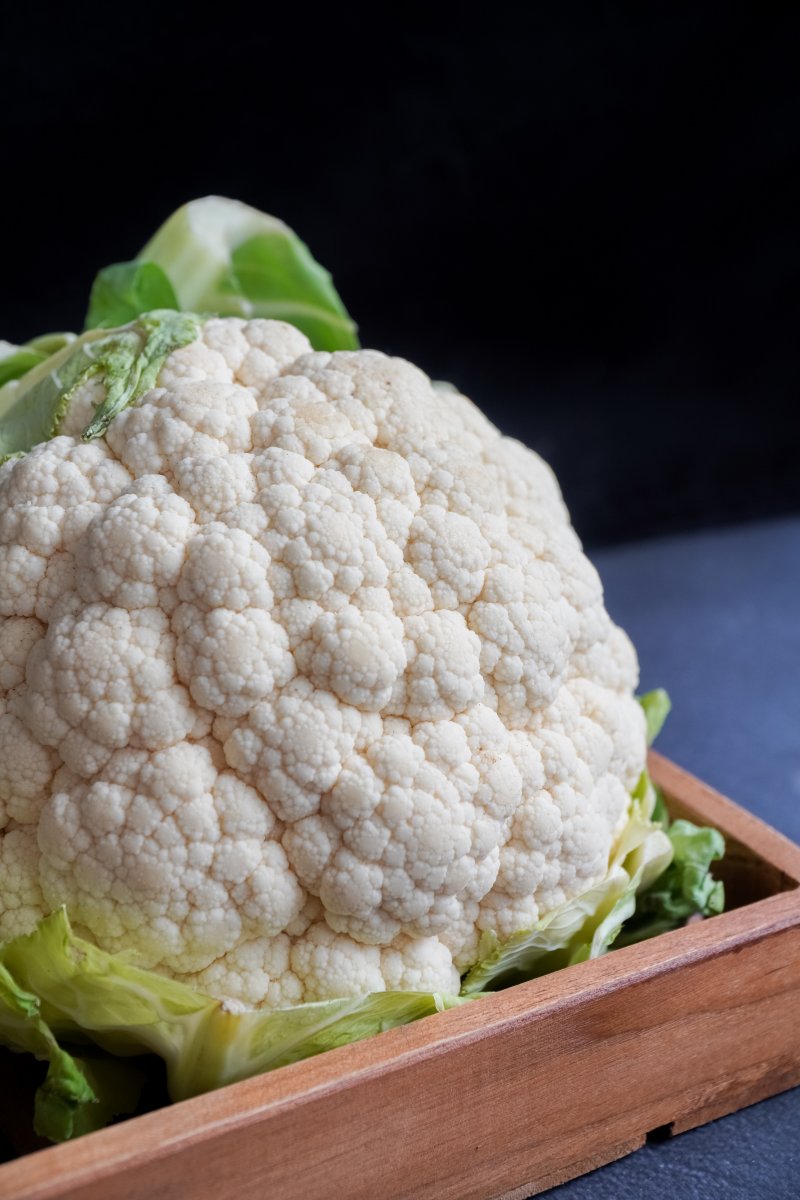
Peanuts
Peanuts can be a good substitute for red lentils in some recipes, but there are some important differences to keep in mind.
- Flavor: Peanuts have a more pronounced nutty flavor than red lentils. This may be a welcome change in some dishes, but it could be a problem if you are looking for a more neutral flavor.
- Texture: Peanuts have a crunchier texture than red lentils. This could be a problem if you are looking for a dish with a creamy or smooth texture.
- Cooking time: Peanuts take longer to cook than red lentils. You will need to cook peanuts for about 30-40 minutes, while red lentils can be cooked in as little as 15 minutes.
Overall, peanuts can be a good substitute for red lentils in some recipes, but they are not a perfect match. If you are looking for a dish with a nutty flavor and a crunchy texture, peanuts can be a good option. However, if you are looking for a dish with a neutral flavor and a creamy or smooth texture, you may want to choose a different substitute.
Here are some specific examples of how you can substitute peanuts for red lentils:
- In stir-fries: Peanuts can be a good substitute for red lentils in stir-fries. The nutty flavor of the peanuts will complement the other flavors in the stir-fry.
- In salads: Peanuts can be a good substitute for red lentils in salads. The crunchy texture of the peanuts will add a bit of interest to the salad.
- In curries: Peanuts can be a good substitute for red lentils in curries. The nutty flavor of the peanuts will complement the spices in the curry.
However, it’s important to note that peanuts will not break down as much as red lentils when cooked, so your dish may have a slightly more grainy texture if you use peanuts instead of red lentils.
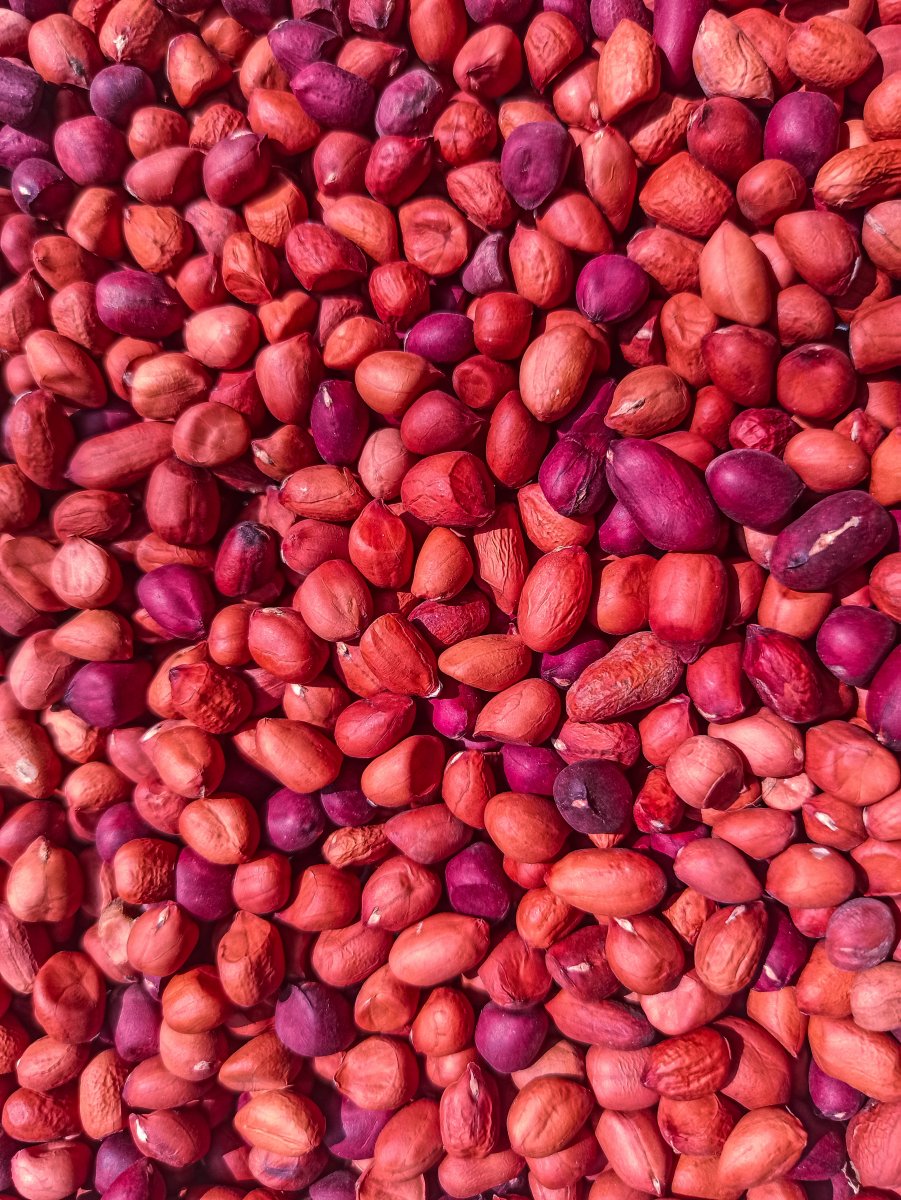
FAQs
How long does it take to boil red lentils?
Red lentils are known for their speedy cooking time compared to other lentil varieties. They typically cook in about 15-20 minutes, making them perfect for quick weeknight meals or when you’re in a hurry to get dinner on the table.
Red lentils are incredibly versatile in cooking. They break down more than other lentil varieties when cooked, giving dishes a creamy texture. This makes them ideal for soups, stews, curries, and even as a base for vegetarian patties or spreads. Plus, they absorb flavors really well, so they can take on whatever delicious spices and seasonings you throw their way.
What are red lentil benefits?
These tiny legumes pack a nutritional punch! They’re rich in protein, fiber, and various essential vitamins and minerals like folate, iron, and potassium. Plus, they’re low in fat and cholesterol-free, making them a healthy addition to your diet.
How does a lentil grow?
The tiny lentil seed is placed into the earth, where they can thrive in cool, dry climates. They’re not picky about where they put down roots and as they start to sprout, they send out tiny shoots. These shoots grow into delicate little plants with pretty leaves and tiny flowers that range from white to pale blue. These flowers eventually turn into pods, and inside each pod, you’ll find the lentils growing. They all start off green but as they ripen, they turn into those familiar shades – brown, green, red, you name it. Once they’re plump and ready, farmers harvest them by hand or with machines, depending on where they’re grown. So the next time you’re in the mood for a nutritious and delicious meal, consider incorporating red lentils into your cooking – they’re as versatile as they are healthy!
Summary for Red Lentil substitutes
Okay – that’s you all sorted with a suitable substitute for red lentils.
- Brown Lentils: Brown lentils are similar in texture to red lentils but have a slightly nuttier flavor. They hold their shape well when cooked and can be used as a substitute in soups, stews, and curries.
- Green Lentils: Green lentils have a firmer texture and earthier taste compared to red lentils. They take longer to cook and retain their shape even after being cooked. Green lentils are suitable for salads, side dishes, and hearty lentil-based recipes.
- Yellow Lentils: Yellow lentils can be used as a substitute for red lentils in certain dishes. They have a mild flavor and cook faster than green or brown lentils. They work well in soups, dals, and purees.
- Split Peas: Split peas are dried field peas that have been split in half. They are a good source of protein and fiber, and they have a mild flavor. Split peas are typically cooked in soups, stews, and dals.
- Chickpeas: Chickpeas, also known as garbanzo beans, can be an alternative in recipes where red lentils are used for their texture. Chickpeas have a slightly different flavor and larger size, so they may not work well in all dishes. However, they can be used in salads, stews, and curries that require legumes with a firm texture.
- Cauliflower: Cauliflower can be a good substitute for red lentils in some recipes, but it is not a perfect match. It offers a milder flavor and a slightly crunchy texture.
- Peanuts: Peanuts are an unusual choice but if you are looking for a dish with a nutty flavor and a crunchy texture, peanuts can be a good option.
If you would like to learn about other ingredients you can swap out, have a look at our Substitutes section.
